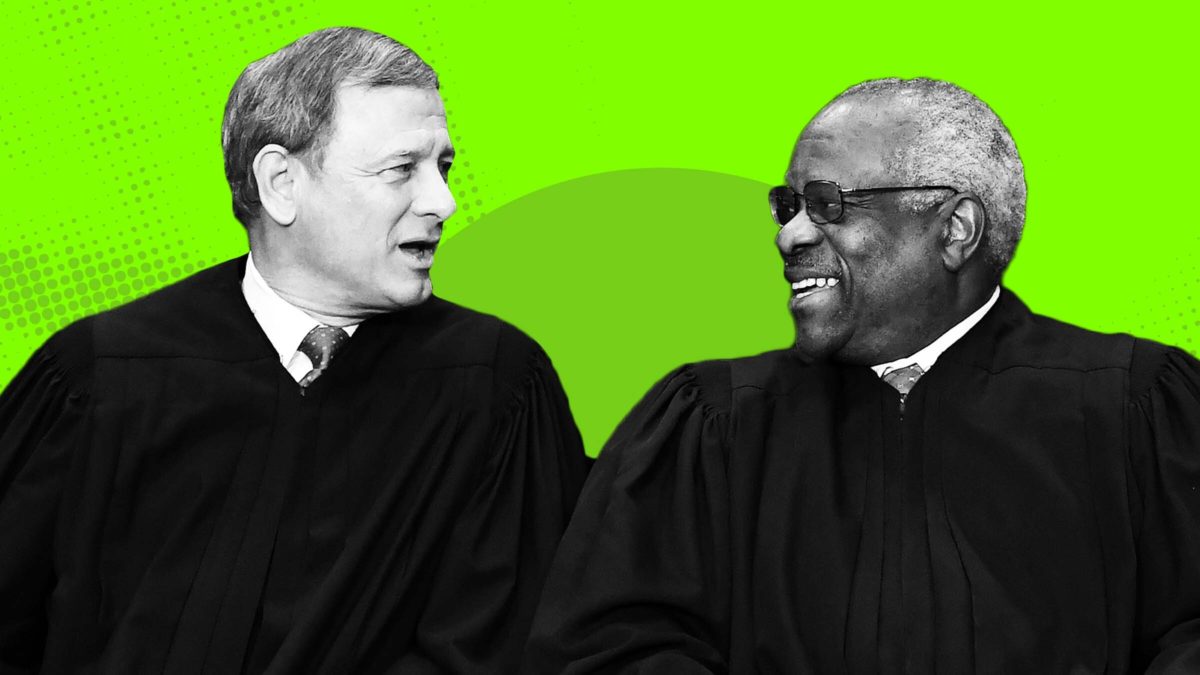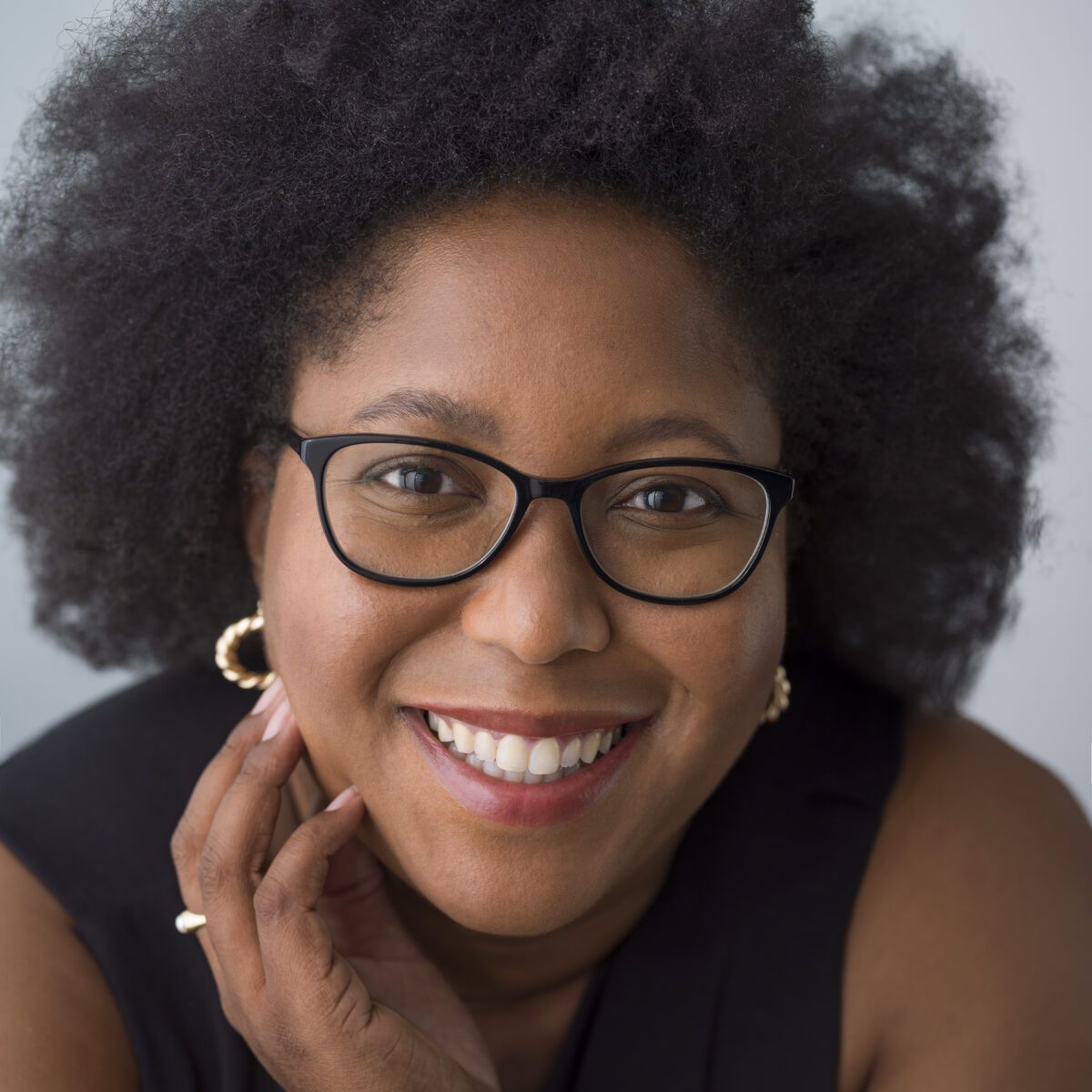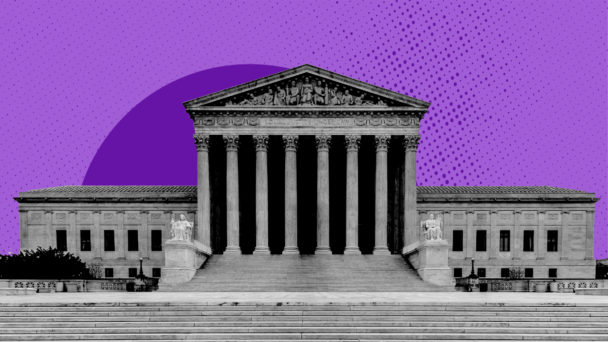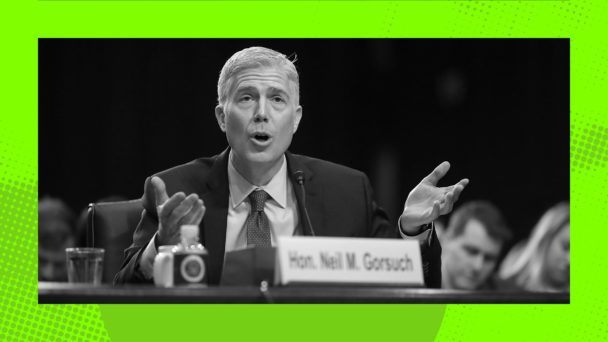For reasons unknown, Justice Clarence Thomas didn’t show up to work yesterday: Although the Supreme Court heard oral argument in two cases on Monday, the justice neither attended nor asked questions remotely. From the bench, Chief Justice John Roberts shared only that Thomas would “participate fully” in deliberations based on the briefs and transcript of oral argument. Thomas returned to work on Tuesday without explanation, and resumed business as usual.
Many observers are wondering what prompted Thomas’s absence. (Perhaps yesterday’s argument in Snyder v. United States, a case about porous barriers to government corruption, hit too close to home; perhaps he was busy asking his accountants if he still has to file taxes when Harlan Crow claims him as a dependent.) I’m also wondering why we, the hundreds of millions of people whose lives are controlled by Thomas’s decisions, have to wonder this much about his absence at all.
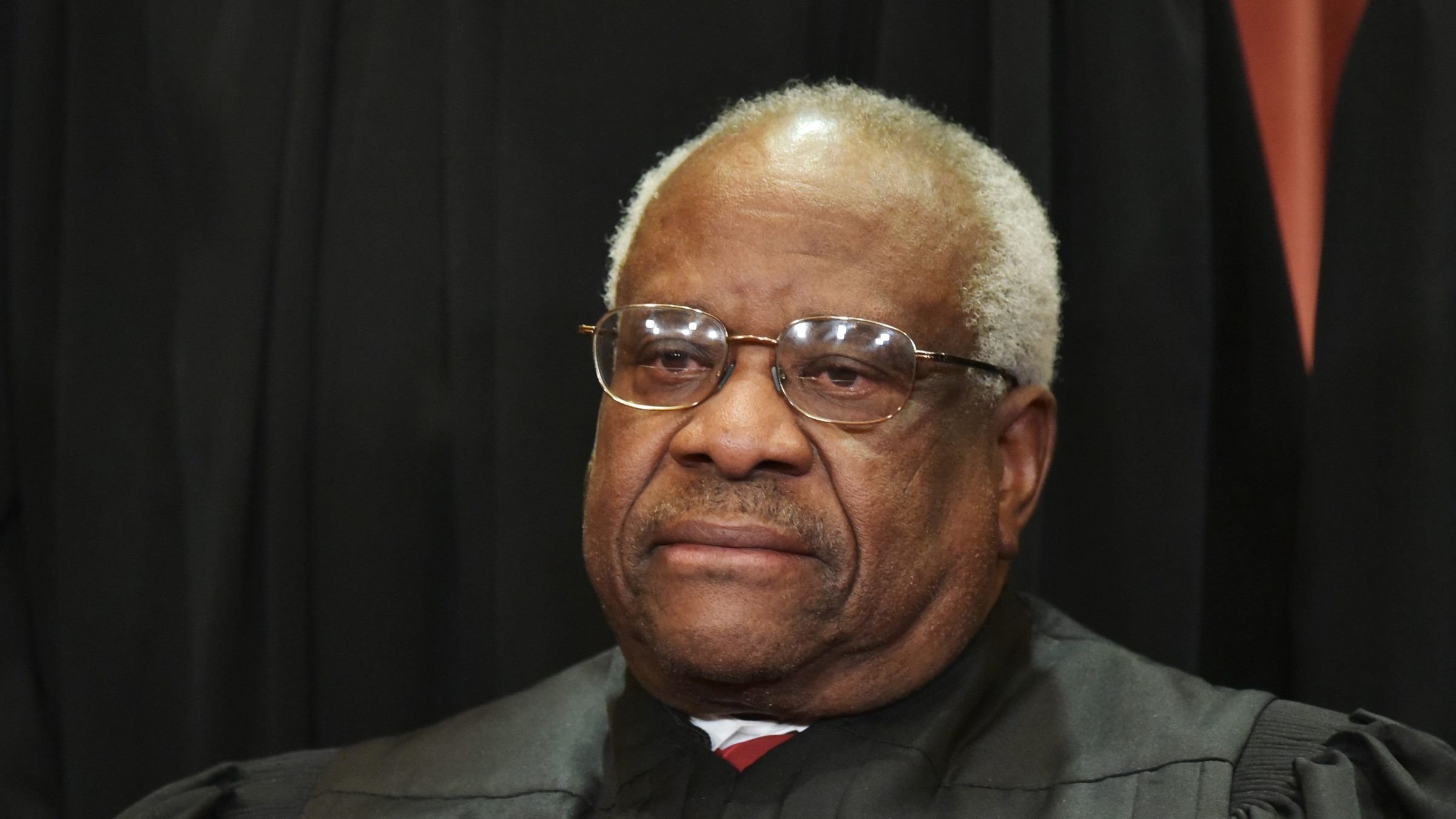
(MANDEL NGAN/AFP via Getty Images)
The Supreme Court notoriously plays by its own rules. If a justice has a conflict of interest in a case, they alone decide whether or not to recuse on that basis, or if their presence on the bench is simply too important. If they do recuse, they may or may not tell you what that conflict is. If they miss the statutorily-required deadline for disclosing expensive gifts, no matter, they’ll just get an extension.
If Congress, an ostensibly co-equal branch of government, requests that the justices testify at a hearing, they say no. There are no cameras in the courtroom. There are no enforcement mechanisms in their code of conduct, which already is less a code of conduct than an assortment of loopholes. They have life tenure. They are accustomed to never having to explain themselves. Joe Biden can’t hiccup without the New York Times cranking out 2,000 words interrogating his physical wellbeing and its possible implications on American government. The Supreme Court has increasingly become the most powerful policy-making body in the country while remaining the least legally, politically, and socially accountable.
The Court does sometimes deign to share the reasons for its members’ unexpected absences: Two years ago, for instance, when Thomas was hospitalized with an infection, the Court said so, and that he would work remotely. But there is no guarantee that the public will be informed on a matter so simple as ‘why isn’t this rich and powerful government official at work today?’
Thomas was back in his seat for oral argument on Tuesday, still with no explanation for his absence. What kept him out yesterday, the public may never know. But in addition to whatever the immediate reason was, the longstanding reason is the opacity of a Supreme Court that has never bothered to care about transparency in the first place.
